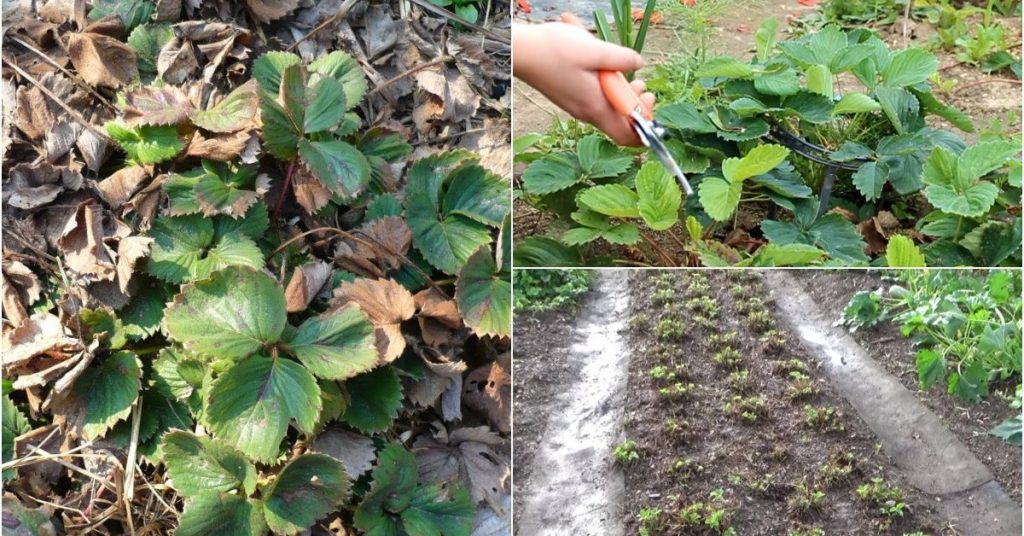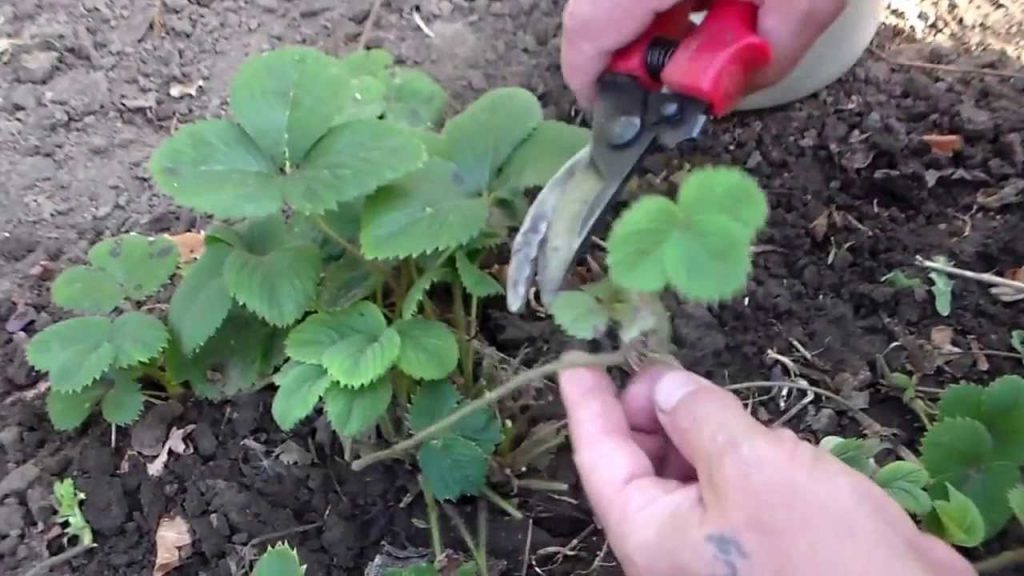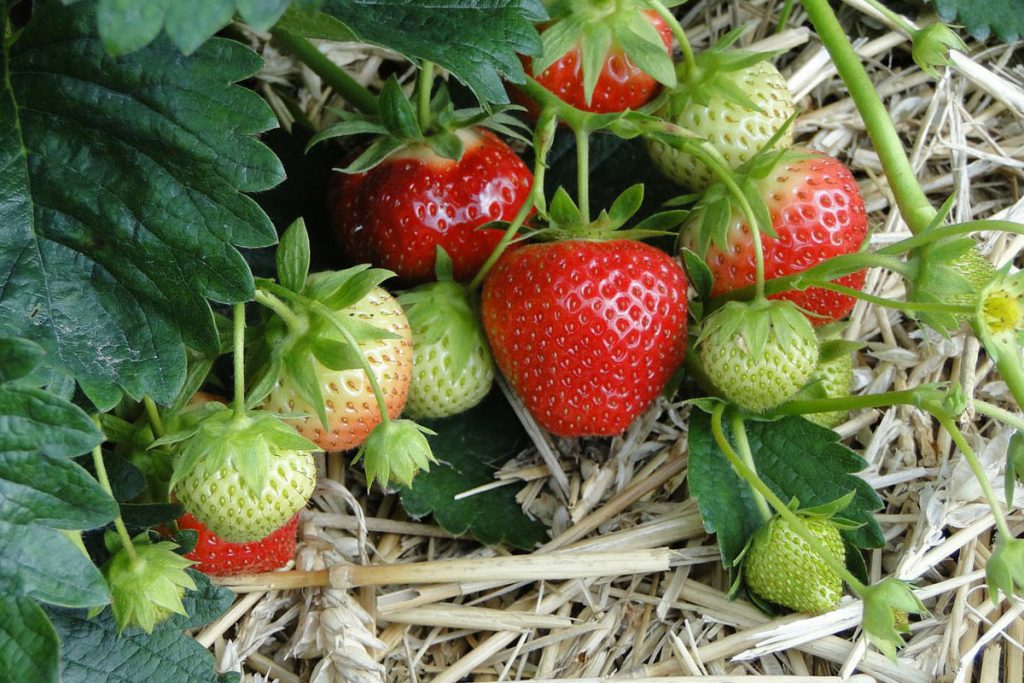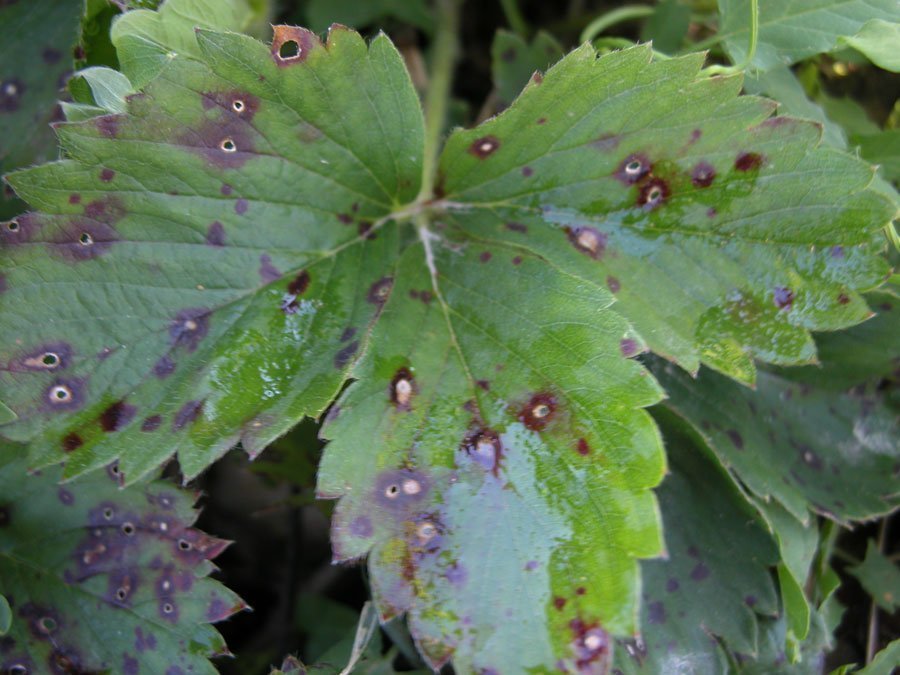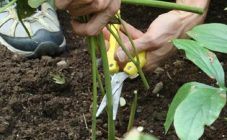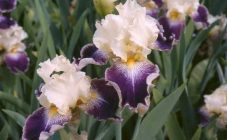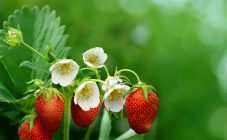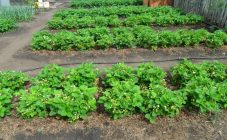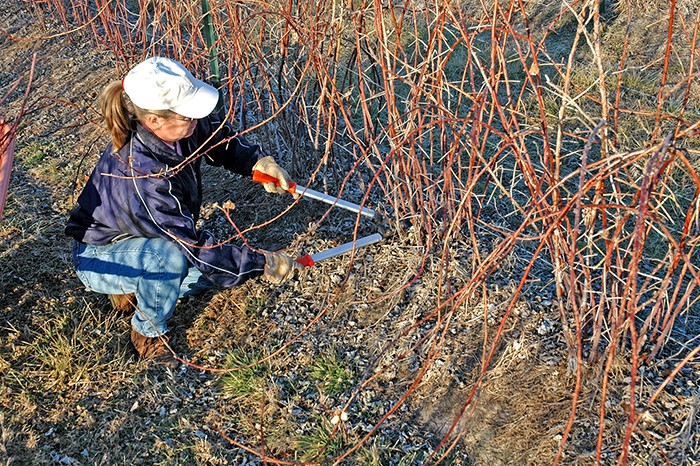Content:
Pruning strawberry bushes is one of the important activities when caring for a berry. However, gardeners have a perennial debate over when to prune strawberries, whether or not to do it at all. Conflicting advice is often confusing, especially for newbies planting tasty and healthy berries for the first time.
Why cut strawberries
Opponents of pruning argue their point of view on the following factors:
- leaves are participants in photosynthesis, to remove them - to disrupt metabolic processes;
- the smallest spores and larvae of harmful insects will still fall to the ground and continue their development.
However, leaves that are yellow or red in color or covered with spots are poor helpers for the assimilation of nutrients by the bushes, they impede the normal development of young shoots. Often infected with pathogenic microorganisms, they pose a great danger to the entire plantation. Prevention of disease and pest attacks is much more effective if clean bushes are treated.
There is also a compromise option - strawberries are trimmed only when necessary:
- update the bushes;
- remove leaves that are dry, damaged, with obvious signs of insect or disease damage.
The second criterion also has a preventive purpose - it reduces the number of pests that intend to overwinter on strawberries and reduces the risk of extensive damage to plants by fungal diseases.
There are three main periods that are most suitable for cleaning strawberry beds - spring, autumn, after harvest. Each is characterized by its own characteristics.
Spring pruning
Carried out in early spring, when the beds dry out a little. Remove frozen, rotted, diseased sheets.
Pros of early peeling of strawberries:
- pests sleeping in them are removed with leaves, which can cause significant damage to bushes weakened after winter;
- since a significant aerial part is removed, the roots receive more nutrition, which is important for the active growth of fruitful shoots.
When removing leaves, it is worth remembering: the more leaves are removed, the later the plant will begin to bear fruit. Therefore, it is necessary to assess the viability of each branch.
In addition to the leaves, the mustache is cut in the spring, which was formed in the fall. Without this, the beds quickly become overgrown with low-yielding bushes.
Step-by-step instructions for spring pruning:
- Sanitary pruning is carried out as soon as the cover is removed. The timing is determined based on climatic and weather conditions, approximately from early March to mid-April. Dried, diseased, severely damaged leaves that have lodged on the ground are cut out.
- At the second stage, at the beginning of the active growth of young leaves and shoots, leaf plates with impaired development are subject to removal - deformed, slowly developing.
- The third stage, shortly before the beginning of flowering, is the cutting of the mustache. They are cut off 5-7 cm from the center of the bush, removed from the soil.The strongest rosettes are selected from this material for reproduction, if necessary.
Pruning in the fall
It is around this event that the most heated debates flare up. There are two opinions: violation of the natural course of the vegetation process versus an increase in yield.
The first is the rule of preparing strawberries for winter: bushes with well-formed foliage, developed buds of fruiting and renewal winter without losses. This requires at least two months, and therefore autumn pruning is the essence of summer, it is carried out from mid-July, after collecting the last berries, completing by the second half of August.
If it becomes necessary to cut the leaves before winter, only the leaf plates are removed, leaving the petioles.
Summer cleaning
Summer is a busy period in the life of a berry bush - flowering, setting and ripening of berries, the formation of a mustache.
High-yielding strawberry varieties require special attention. Along with a large number of peduncles, they actively produce stolons. It is highly undesirable to leave offspring during flowering and fruiting. Such "mustached" varieties include:
- Kimberly, Zephyr, Honey - early maturing;
- Marshal, Vima Zanta, Chamora Turusi, Holiday, Black Prince, Crown, Lord - mid-season;
- Roxana - late;
- Temptation - remontant.
During flowering
Since the strawberry whiskers are released during the entire growing season, before they bloom, they are cut off and do so until the end of fruiting. The measure has a positive effect on berry yield and ripening time.
Even experienced gardeners are wondering if strawberry leaves can be trimmed during flowering. Experts believe: dry leaves are to be removed, they are no longer needed by the bushes, but pests are hiding in them, pathogens feel good. Experienced summer residents recommend cutting off the first flowers, especially small ones, so that larger berries will start from the next.
During fruiting
A frequent question of beginners - whether it is necessary to cut the leaves of strawberries during its fruiting - is also a controversial topic. Someone does not want to disturb the plant during the ripening of the berries, but most are inclined to believe that the procedure is needed, but it should be carried out wisely:
- only the lower leaves are cut out, no more than 2 pcs.;
- remove large leaves shading ripening berries.
Often during this period, stolons are removed, which take away nutrients from the mother plant, leaving only the most suitable for reproduction.
After harvest
An exciting topic for beginners is whether to trim strawberries after the end of fruiting. After the berries ripen, strawberry bushes weaken and become vulnerable to pathogenic microflora. In addition, the second half of summer is the period when fungal infections are activated - an abundance of moisture and heat create heavenly conditions for them. Therefore, it is very important to cut off the leaves in time, on which signs of pathogen activity appeared, this will avoid powdery mildew, various spots of fungal origin, gray rot.
Other undoubted advantages:
- good heating of the soil by the sun's rays disinfects it;
- the level of humidity at the base of the bushes is significantly reduced, which inhibits the development of a dangerous pest - strawberry mite;
- facilitates the implementation of subsequent care measures;
- bushes cut during this period are quickly restored, successfully budding for the future harvest.
Pruning must be completed 2.5-3 months before the cold weather. During this time, the bushes will build up a new leaf mass necessary for the laying of horns and flower buds. An alternative could be late, autumn cleaning of the berry, when only problem leaves are cut:
- all lower;
- with bloom;
- covered with spots.
Thinning strawberries
Thinning strawberries usually involves two processes:
- Planting seedlings at a distance optimal for the variety, jigging rosettes on the mustache.
- Removal of leaves shading ripening berries, whisker cutting.
How to thin out strawberries in the first case: a spring or autumn transplant to a new, pre-prepared place will help. Rosettes of leaves on a mustache, suitable for reproduction, are separated from them during pruning, planted for rooting in small cups, in the fall they are determined to a permanent place, thus updating the berry beds.
How to thin out strawberries to provide the berries with enough sun can be done during flowering by mowing down large leaves that shade the buds.
Tips & Tricks
Features of pruning remontant strawberries:
- The first flower stalks are cut off so that subsequent fruiting is more abundant, the berries are larger.
- The last inflorescences are removed, because the berries on them will not have time to ripen before the cold weather, but they will take away the strength necessary to prepare the bushes for winter.
- Until the end of fruiting, the leaves are mowed only with obvious signs of disease, dry.
- Most varieties give abundant stolon growth, they are regularly removed before the end of the ripening period.
If, when mowing the leaves, it is found that the bush is more than half affected by diseases, it is dug out, the remaining hole is spilled with potassium permanganate. Leaves and peduncles are cut off at a height of 5-7 cm in order to exclude infection of the base of the bush with various diseases.
Cut strawberries in the following order: start with the youngest or healthiest plantings; next in line are two- and three-year-old bushes; problem plants are then treated.
Tools are disinfected after processing each bush.
Since the main purpose of pruning strawberries is to remove parasites from the beds, the feasibility of the event may be questionable if the plantings are healthy, or the owners are actively using chemical treatment of the site. Assessing the need for mowing and how to choose the time for it is a task that only the owner of the site solves.
